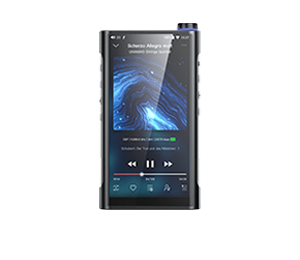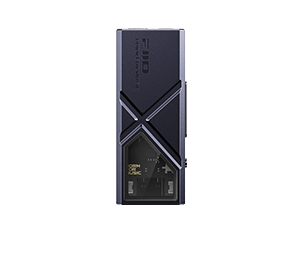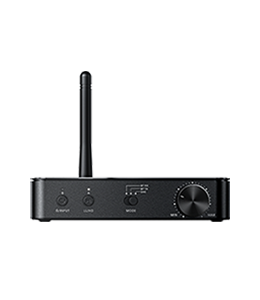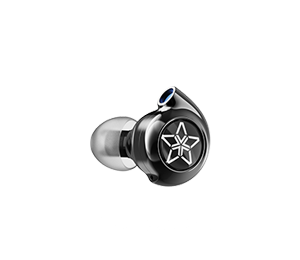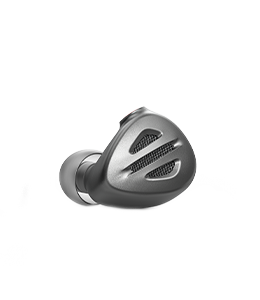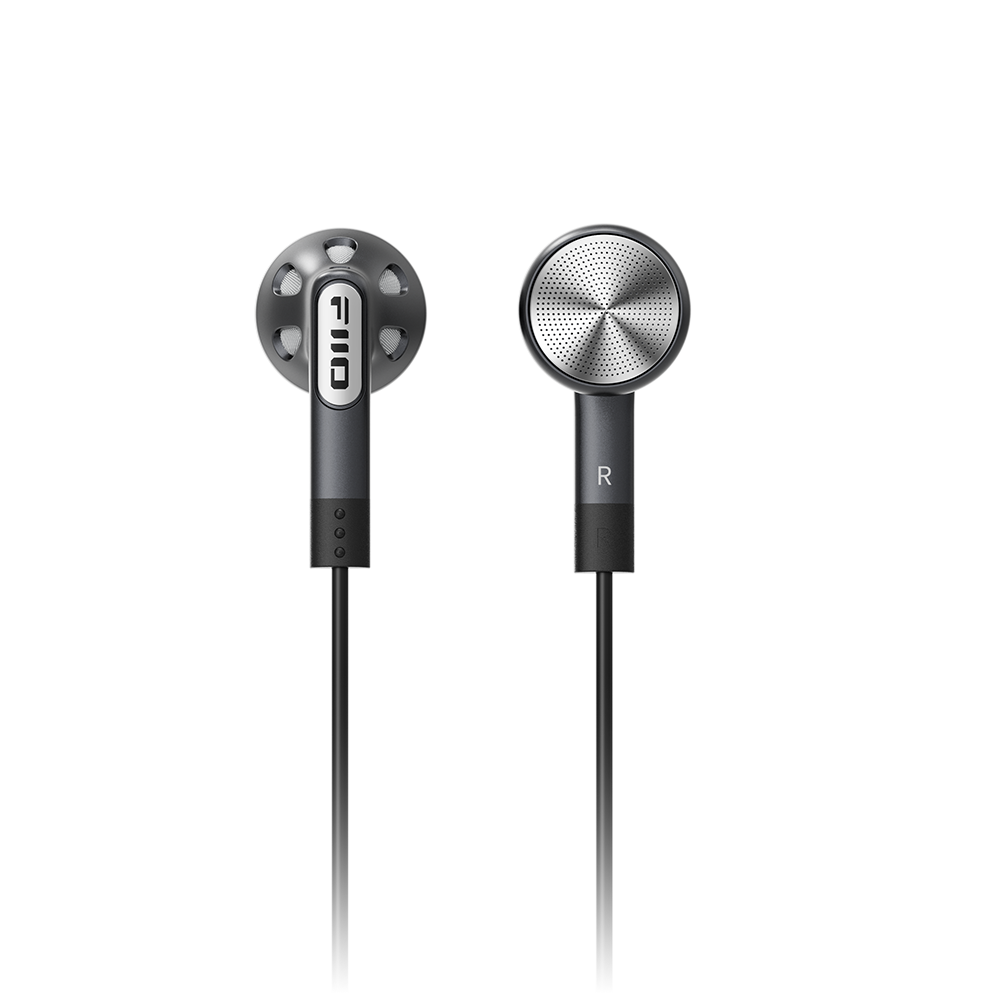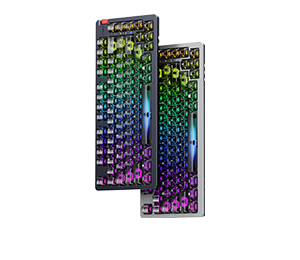Fiio M3 Digital Audio Player: Incredibly Good Sound in a Microscopic Package!
Author:Tom Gibbs
Review from:Positive-feedback
→→ Read the original article on Positive-feedback:>> Click here

Fiio is beginning to gain a little steam in the personal portable world; their top-of the line player sells for about a third of what an Astell&Kern mid-line player costs, and offers a feature set that's easily the equal or better of the higher-priced machine. I first reached out to them last year, and the ensuing conversation was comical at best. An upstart Chinese company, their initial response was to send me a link to a web-traffic monitoring software program that basically told me that their impression of our (PFs) web traffic was not too favorable compared to some of the bigger names on the web. Seriously? I then took a few moments to do a web-traffic comparison of most of the big audiophile publications, and our numbers didn't look too bad compared to everybody else. I relayed my impression of these numbers to them, and they thanked me for my interest. The end.
After six months or so, they came around (or at least reconsidered), and offered to send their new entry level player, the M3. The M3 is diminutive at best—even from the handful of brief reviews I'd seen online basically describing it as "smaller than a pack of cigarettes"; indeed, it's more like a pack of Tic-Tacs! I was at least expecting a cardboard box coming all the way from China—it showed up in a smallish padded envelope.
That is, when it finally showed up—I received a text message from DHL on a Thursday afternoon asking if they could leave the package at my door without a signature. I didn't get the message right away; six minutes passed before I responded in the affirmative, with a qualifier that they please respond to let me know if they did in fact leave the package. No response from DHL, and no package when I arrived much later that evening. An email to DHL generated an automatic response that I'd be contacted in the AM. Friday morning, I received an email telling me that I'd get an update prior to 5 PM that day to confirm the whereabouts of my package. At 5 PM, I got an email from the person who had been assigned to my complaint, and his response was that DHL would have a firm answer for me no later than the following Tuesday afternoon—four days later! On Tuesday, I received a phone call, asking if I could relate the exact content of the text message I'd received from the DHL driver, and was told that the driver in question was not going to be available until the following Thursday to provide any pertinent information regarding my complaint. Any expression of disbelief on my part did not phase this person—he told me that they'd be in touch in a couple of days, and that the likely scenario was that the DHL driver in question would probably have to retrieve the package in question from the wrong delivery address—if, in fact, that was the case! The package finally showed up a couple of days later, with no explanation from DHL as to what really happened. Needless to say, I sent them a strongly worded email thanking them for their exemplary level of customer service!
The M3 comes in a pretty flimsy paperboard box with plastic insert, but it survived the long trip in perfect condition. You have a choice of several colors; mine came in black, and the box contains a microscopic product manual, a mico USB-to-standard USB cable and a pair of flimsy-looking earbuds. Also included are a few screen protectors to help prevent damage to the 2.0 inch video screen. I started by accessing the online manual so that I could actually read its contents! The cable can be used for charging or for data upload, but Fiio recommends charging using an available phone charger with a micro USB connector. I chose the latter option, and the M3 was fully charged in about two-and-a-half hours. Fully charged, the M3 will play for about 24 hours, and that has been my experience so far—this little gizmo really holds a charge!
First a few comments about the M3's capabilities: this unit is not really a high-resolution player, per se. It'll play just about everything except for DSD files, but is limited to 24-bit, 48kHz files for everything except WAV files, which it will play at 24/96 resolution. I've done the WAV to FLAC comparisons, and I don't really subscribe to the superiority theory of WAV files to FLAC files of the same provenance. Especially considering WAV's lack of metadata, which in my view greatly reduces their accessibility and functionality, especially on a personal portable. Therefore, I don't really have many (if any) 24/96 WAVs readily accessible for download on my music server for comparison purposes. I didn't really bother to mess around with them, especially considering how really great the CD quality files sound!

The unit has a 2.0" screen with a resolution of 240 x 320 pixels; it's serviceable at best—but for a bargain-basement priced unit like this, what do you really expect? Nonetheless, this was still something of a disappointment, especially in view of how Fiio's website touted the M3's display capabilities. Needless to say, the M3's GUI is especially disappointing, with little more than pictographs of the unit's various functions and barely-legible small-type text in the Courier (typewriter) typeface. The M3's only output jacks are the aforementioned micro-USB for charging and data, and a 3.5mm headphone jack that also serves as the line out. Fiio is beginning to move away from the scroll-wheel approach to file access, and the M3 has very small press-type buttons to navigate the menu and operate all the unit's functions. There's a round power button on the left side of the unit, and an elongated lock button on the right side that prevents any changes to be accidentally made to the M3's operation when engaged.
After fully charging the unit, I had a 32GB Micro SD card on hand that I inserted into the M3 and formatted via the M3's menu. The next step is to update the M3's firmware, a somewhat peculiar process. In order to do this you have to have a song loaded onto the built-in 8GB hard drive and begin play of the song. Hook up the supplied micro USB cable to your PC, then download the firmware update from Fiio's website and copy it to the root folder of the built-in 8GB hard drive. While the song is still playing, navigate to the settings menu and choose Auto Upgrade, then allow the M3 to complete the firmware update and reboot. Make sure that the battery is fully charged before undertaking the firmware upgrade. With regard to the optional Micro SD card, you can insert any value up to 64GB in size, which gives you a total usable storage space (in combination with the internal storage) of 72GB. Now there's a bit of a twist here; you can only format an SD card up to 32 GB using the M3's menu, and if you want to use a larger card, you'll have to use your own PC to format your card as FAT 32. I've read some reports on the web that indicate that the M3 will support a Micro SD card up to 128GB, but I have no way at this point to confirm this.
I haven't really used a personal portable in years, since my old Walkman CD player died more than ten years ago, but I do travel quite a bit and do some headphone listening from time to time, usually with a laptop and an AudioQuest Dragonfly. I got a pair of the Monoprice headphones that Steve Guttenberg raved about late last year (I take them on the road with me), and they do sound very, very good for just under $15. I also have a pair of Sennheiser 280s that I use around the house, and for giggles, I decided to take a listen with the supplied ear buds from Fiio.
So let's cut to the chase, here: how great could a $55 MSRP player really sound? Surprisingly good, when paired with either decent headphones or a really good output device like powered speakers or even in use with your car's system. The Fiio ear buds were no mere throw-aways—probably for seventy-percent of buyers at this price point, they'd be perfectly acceptable. They get the really important midrange and treble just about right, and are only lacking in extreme low bass, but more importantly, lacking in comfort—they’re just a tad unpleasant to wear, and one size most definitely doesn't fit all. The Monoprice headphones also sounded remarkably good, with superb bass and a really liquid midrange, and only the barest trace of hardness in the upper registers. The real surprise was how very good the Sennheisers sounded with the M3—I could sit for hours with no trace of fatigue and the sound was darn-near superb! The M3 had tons of volume available for every headphone I hooked up to it—I was very surprised by this, and was expecting it to run out of gas—that never happened, and the sound was exemplary at any volume level. The M3 also offers built-in equalization; there are preset curves or a customizable setting. My experience was that the eq added a touch of grain to the proceedings, so I did all my listening using the default flat eq setting.
I recently reviewed the excellent Audioengine HD6 powered speakers (feel free to check that review out HERE), and with the M3 connected to the HD6's, I was really surprised at how very good the sound was through a much more robust system setup. Of course, we're only listening to CD-quality or slightly better files here, and the internal circuitry of the M3—how great can it be, especially in such a small package? Surprisingly and satisfyingly good, if perhaps not the final word in resolution. The overall sound quality of the M3 to me is a whole lot better than a number of stand alone CD players I’ve owned over the years. And I found with the M3's internal volume control set to its maximum level, the volume knob on the HD6 speakers provided shockingly good playback at just about any volume level—the speakers never sounded strained or less than superb. I really loved these speakers, and felt that they were capable of producing stunningly good sound when supplied with a really good signal. In combination with the M3, the HD6's really sounded, well, pretty great!
The absolute shocker for me came when, on a lark, I decided to play the M3 through my car stereo, which is about ten years old and consists of a Pioneer head unit, Sony multichannel amlifier, Polk speakers and a Kicker subwoofer. The head unit has both USB and aux inputs, and I mostly listen to higher resolution MP3 files from a 32GB flash drive. I've always been disappointed that I've never been able to seriously distinguish between MP3s or CDs played through the system—they both sound about the same, even though the CDs are much higher resolution files than the MP3s. I've always allowed that impression to color my perception of my car system, considering it mid-fi at best, even though I probably spent close to $2,000 on it. With the M3 playing though the car system's aux input, which essentially bypasses all the head unit's internal circuitry other than the volume control, I've been absolutely transfixed by how incredibly good the car system now sounds. The weakness of my car system is most definitely the internal digital-to-analog conversion in the head unit. With the M3 as the source, the system now plays with power, authority and finesse—I'm truly stunned! A word of warning: don't even think about trying to make any kind of programming changes while driving, the M3’s display can be very difficult to read (especially in daylight) and the buttons are very small. Make a choice before you depart and stick with it for the duration. Just lay back and enjoy the ride—when the music is this great, it literally takes you away; I almost feel like I’m driving a new car!

So here's a breakdown of the good and the bad, and let's try and take this into perspective—this is $55 player, OK? The good: the M3 is capable of very good sound indeed, much better than anyone would rightly expect from a $55 unit that’s as ridiculously tiny as the M3. That goodness is multiplied exponentially when the M3 is paired with really good headphones and peripherals. The unit has exceptionally good battery life, lasting up to 24 hours per charge. And for runners or exercise freaks in general, the M3’s size is sheer perfection.
The bad (and there’s quite a bit): the buttons are tiny, and while backlit, are occasionally problematic to operate. The display is lowish-res and somewhat crude—some of the album art looks really great, some of it looks darn near abstract. I keep wanting to use the menu screen as a touch screen, which, of course, it’s not, and care must be taken not to inadvertently crack it by trying to press too hard. Some of the operational functions are somewhat counter-intuitive, and it can initially (and occasionally) be more than a little frustrating to get the unit to work satisfactorily. The maximum file resolution is limited, and the unit doesn't play gapless files, which troubles me way much more than I thought it would. Hopefully they can fix that with a firmware upgrade. Another nagging peculiarity is that you can’t access the entire contents of the M3 from a single menu—there are separate menus for the internal 8GB hard drive and for the micro SD card, so you have to figure out how to search through each independent of the other. I found that the best approach was to just load all the music onto the micro SD card, and, if need be, buy a couple and load each genre of your music separately—a 32GB card is less than ten bucks at Micro Center. And of course, even though the M3 is capable of handling up to 64GB of storage, it’ll only format up to 32GB, so you’ll have to have access to a card reader to format the larger sized micro SD card.
So let’s say that you’re an average Joe like me—never gonna own an AK or any other thousand-plus dollar personal player, for that matter—if for a hundred or so bucks, you could get great sound, higher resolution file playback with a pretty impressive feature set—I’m definitely on board for that! Fiio is moving in the right direction—take a look at the new flagship player on their website, it’s a real gem and does and plays everything and is very reasonably priced ($650). Hopefully we’ll get some trickle down technology at a slightly more affordable level; the really great sound of the M3 bodes well for that, warts and all. At this price point it’s a no-brainer—highly recommended!
Fiio M3 Personal Audio Player
MSRP $55.00
Fiio
All images courtesy of Fiio





